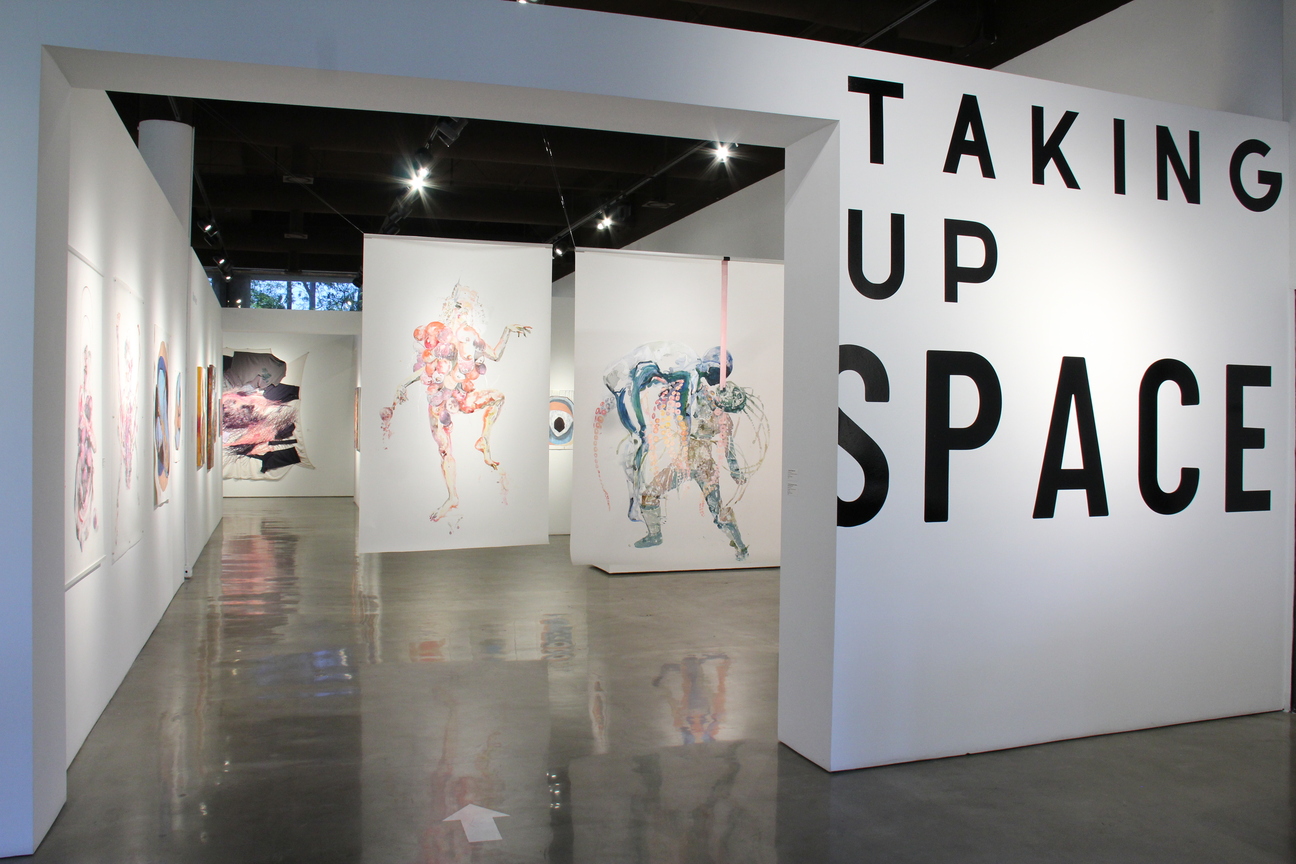
22 Mar “Taking Up Space” @ Brea Gallery Shows the Power and Diversity of Womanhood
According to The New York Times, a recent study showed that women artists’ artworks make up only eleven percent of collections held by top museums. The data, released late 2019, surveyed museum collections from 2008 to 2018 and found that the so-called progressive state of the art world had been dormant . Women make up a little under half of the world’s artists but are significantly underrepresented in the workforce itself. Data like this suggests that there is a treasure trove of artwork by women that has not only been ignored, but also woefully forgotten in many art establishments. It is this very concept that inspired the making of the Brea Art Gallery’s most recent all-female exhibition “Taking Up Space,” on view through March 26.
The exhibition is also presented online in a digital gallery via ArtSteps, so viewers can experience the exhibition virtually.
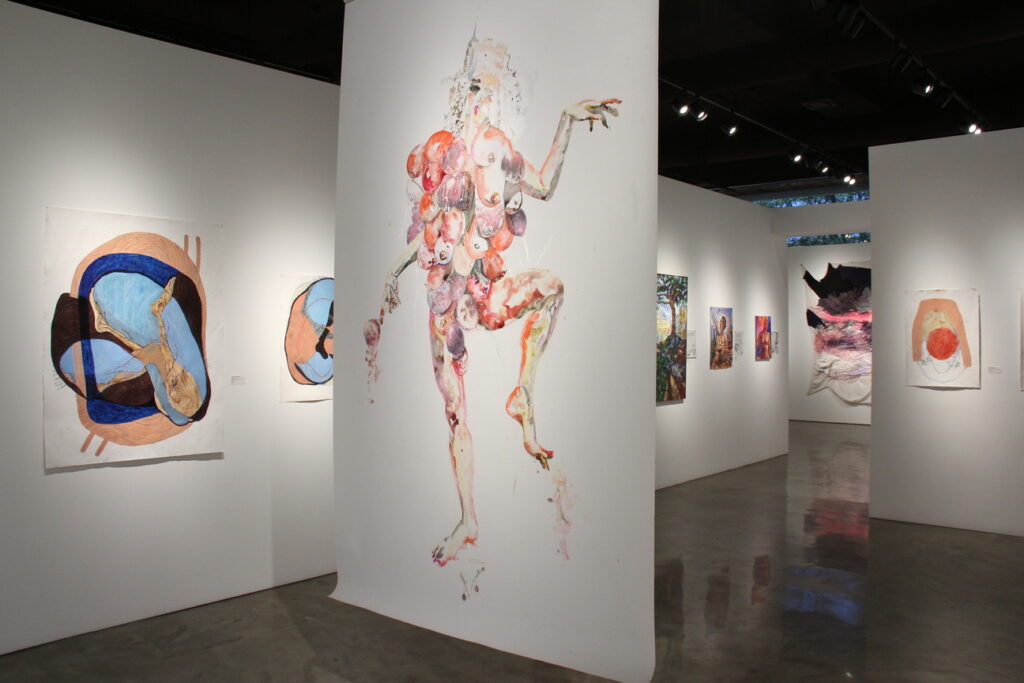
“Taking Up Space” delves into the works of several local O.C. and L.A.-based women artists, focusing primarily on the display of aesthetically and conceptually diverse art that explores the experiences of women.
The exhibition begins and ends with the artwork of Alexandra Carter. Her large-scale drafting film paintings and drawings dangled from the ceiling by the gallery’s entrance/exit. Their brilliant translucency presented viewers with a double-sided narrative of Carter’s fascinating exploration into the “internal state of the body.” The octopoid, nephropid, sometimes grotesque visions of the artist’s representation of the female body added a magnetic sense of vulnerability to the exhibition.
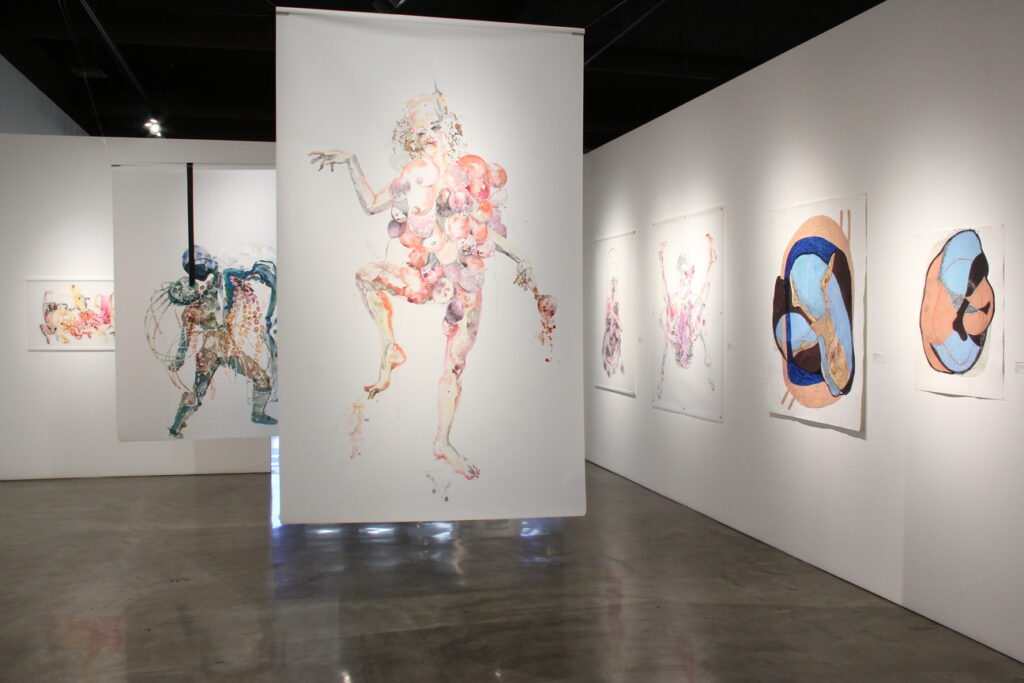
Following the work of Carter is a series of psychological paintings done by Catalina Bellizzi-Itola. These mixed media paintings served as a potent visual representation of the artist’s experience with her own mental health. Having suffered through Post Traumatic Stress Disorder, Bipolar type 2 disorder, and two miscarriages in the same year, Bellizzi-Itola used art as an outlet for her unspoken turmoil. The raw, unencumbered paintings transported viewers deep into the artist’s psyche, revealing a haunting portrait of loss and identity. Similar issues were discussed in the works immediately following Bellizzi-Itola’s, creating a pattern of thought that carries throughout the exhibition.
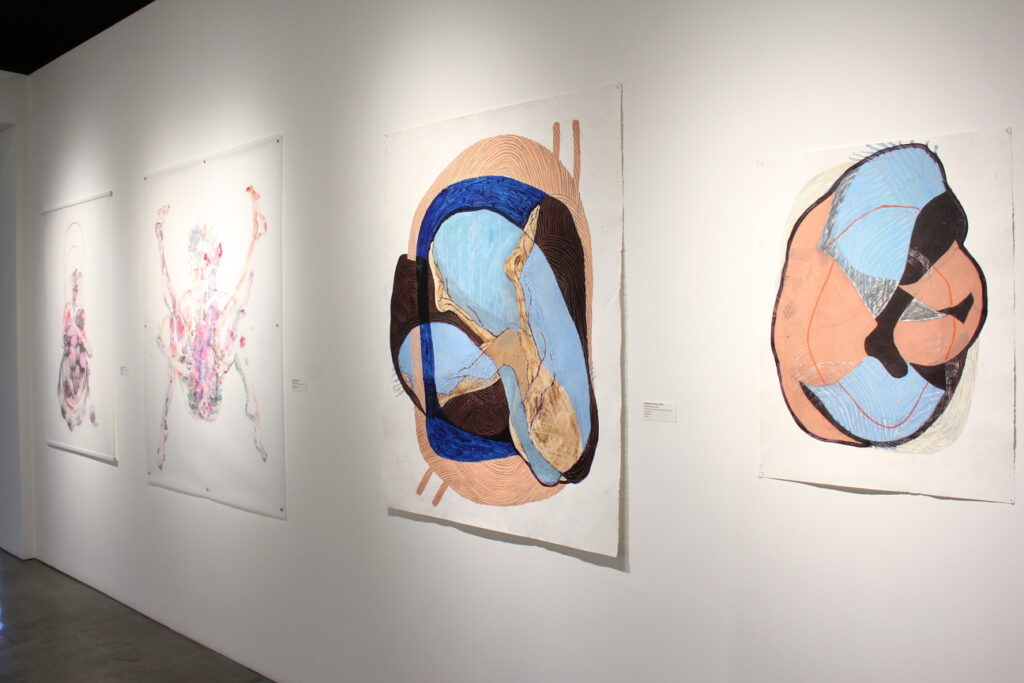
Chloe Allred’s vigorously saturated paintings are coupled with intimate poetry made to compliment the meaning behind each work. This allows viewers to engage with the artist’s written and visual interpretations of the exhibition’s theme. Through her reflections on self-acceptance, Allred invites spectators to piece together the metaphorical nature of each of her works. She actively involves viewers in a conversation about the idea of women “taking up space,” whether they were aware of it or not. This forceful yet beautiful reclamation of one’s identity manifested in photographers Hazel Choo and Juliana Rico’s artworks as well.
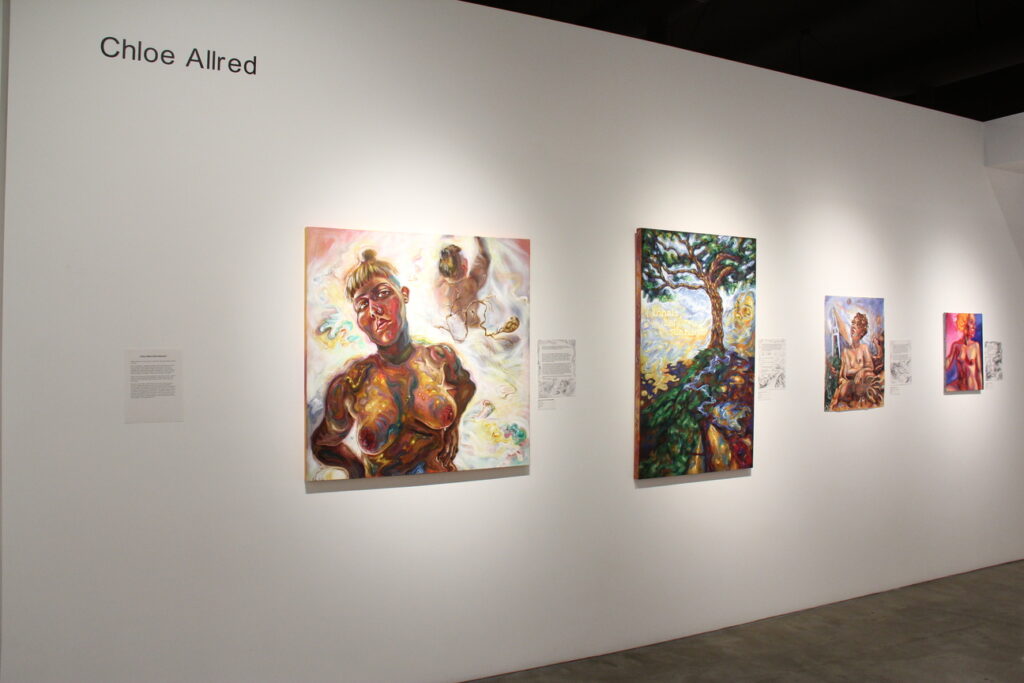
Though exhibiting on opposite ends of the white cube layout of the Brea Gallery, both Rico and Choo’s photography were inextricably linked. Choo’s two series, entitled Untitled (1981/2016) (2016) and Untitled (1981/2017/2020) (2020), were created as a dialoguing point between her native culture in Korea and her residency in Los Angeles. Her striking photographs are hung on their own in the smaller gallery space within the Gallery, giving viewers the opportunity to swallow the depth of her cultural explorations. Choo’s beautiful photographic abstractions of her mother’s Korean hanbok contrasts her traditional roots with her sense of isolationism in Los Angeles.
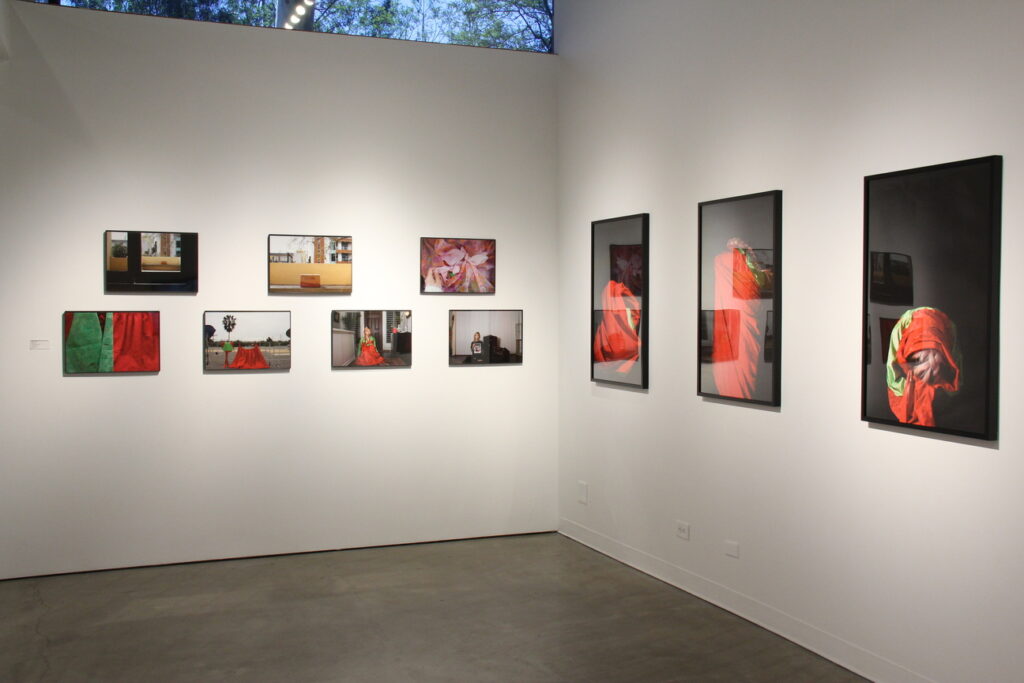
Juliana Rico’s photographic series, Self-Decolonization (2020), is featured near the window of the gallery. It documents the artist’s contemplation and subsequent cleansing of her own internalized ideas of white supremacy. Rico presents herself with a painted mask that she slowly washed away over the course of the series, ending with a self-portrait of her newly cleansed self. Choo and Rico’s willingness to subject themselves in their own work confronts viewers with a vulnerability and an unshakable confidence about their personal identity, an idea that is entirely befitting to the ethos of the exhibition.
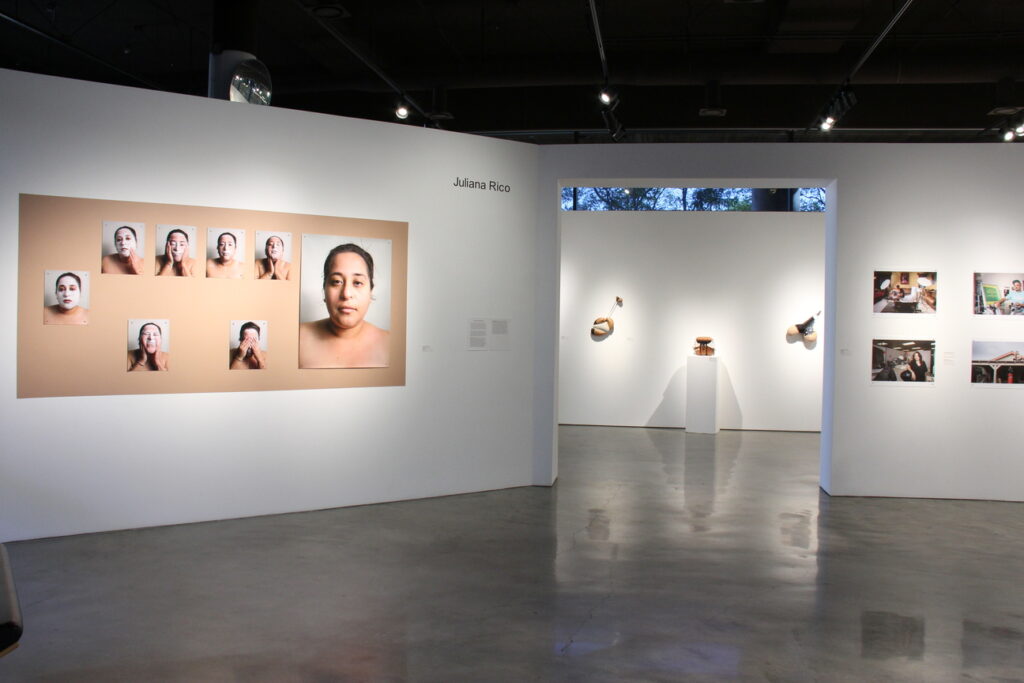
“Taking Up Space” also features a suite of craftworks by Carmen Mardonez, Elisa Ortega Montilla, and Diane Williams, further exploring what had been historically categorized as “women’s work” in fiber and craft art. Mardonez’s hand-embroidered works are situated directly after Allred’s rich paintings. Their flamboyant colors echoed those of Allred’s, but instead of using paint to embody her experiences, Mardonez chose to use recycled fabrics and thread. Her artworks Storm (2020) and Girl Power (2020) boasts a flurry of radiant threads whose artistic philosophy was made visible through their attachment to recycled fabrics. Mardonez’s unorthodox treatment of her materials shed light on societal perceptions of the art that women make. In I Refuse to Become What I… (2020), Mardonez has sewn the words “I refuse to become what I was made for,” into a used pillow cover. The artwork’s inherent feminist message is symbolic of the artist’s desire to connect women’s experiences with sociological assumptions.
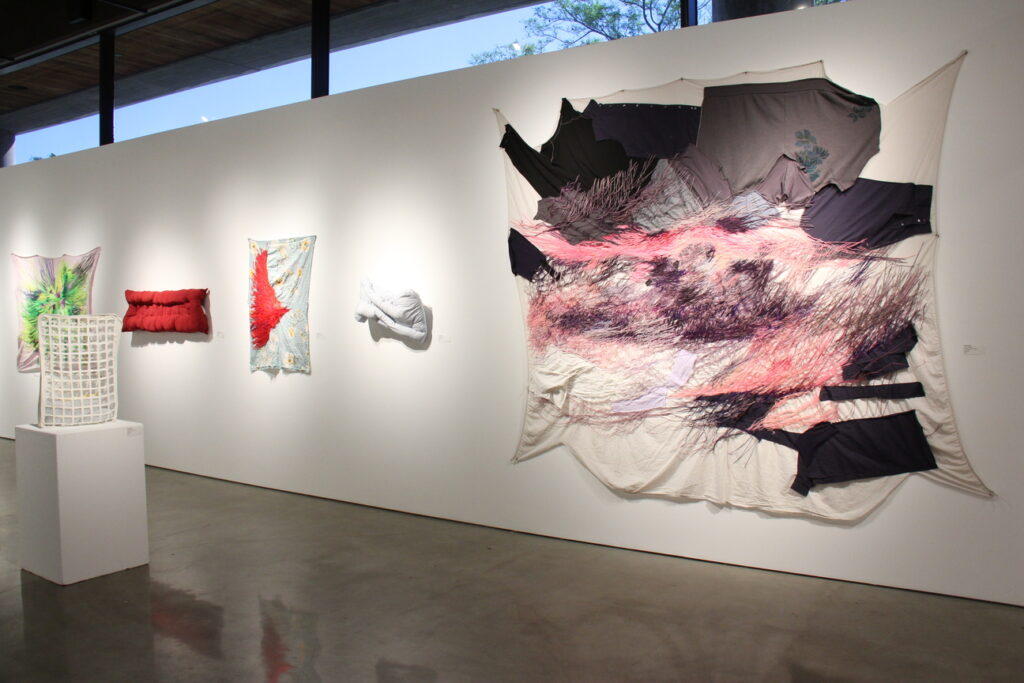
The work of Diane Williams aimed to promote the same type of thinking in viewers who stumbled upon her massive text-based fiber-crafted works in the middle of the exhibition. The sign-like pieces dance in the air like fleeting moments of color. When viewed from afar, they resembled that of a boisterous protesting crowd whose voices can’t be ignored. The pieces, F E A R (2018) and INcongruence Series (2018), were woven from yarn and thread that was obtained by Williams’ friends and family. By positioning them in the immediate walking area of the center of the gallery, these works encourage viewers to interact with them rather than passively stand and observe. Such interactions leave viewers with an impression about the struggles of immigrant populations in this country.
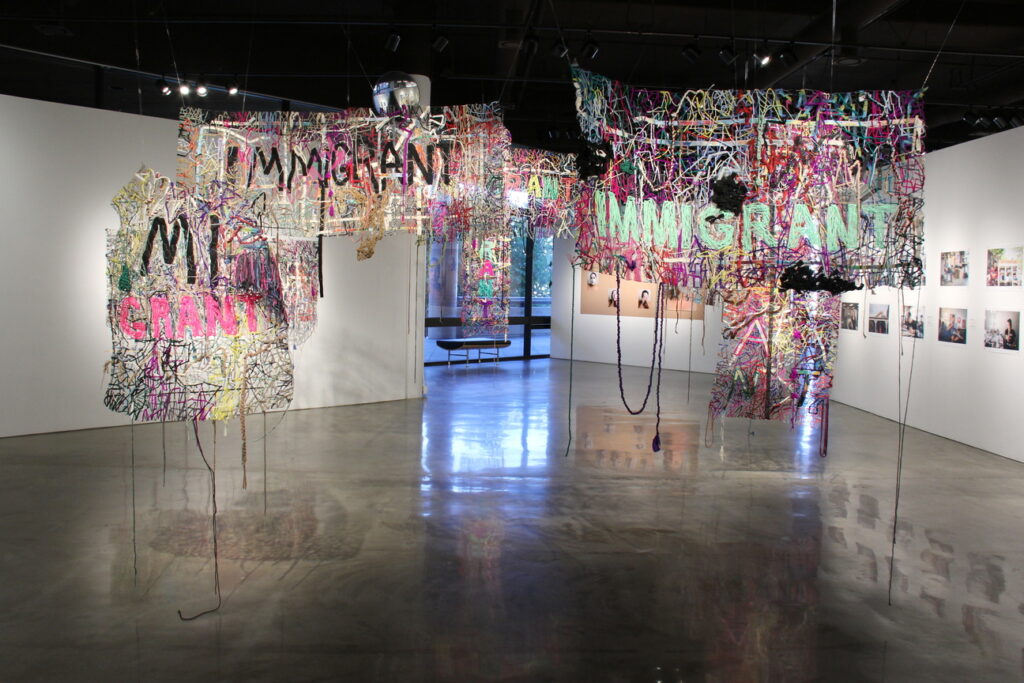
In a more personal outlook on the concept of femininity, Elisa Ortega Montilla’s woodwork surveys notions of the female body and objectification, literally titled Objectifing (2019). The amorphic wooden body forms seems to melt into the lingerie that they had been fitted to. Each piece by Montilla emanated both softness and strength. They effortlessly marry the idea of physical femininity with ideological femininity, resulting in a spectacular playground of sculptures that sailed through the artist’s familiar experiences.
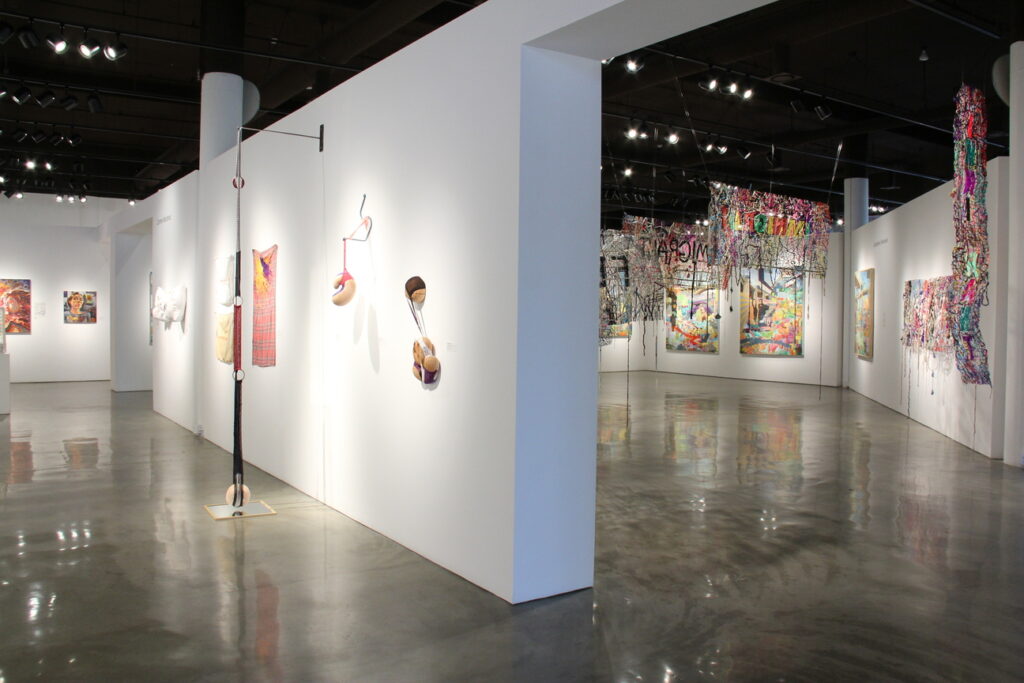
The latter half of the exhibition has two artists, Jacqueline Valencia and Lanise Howard, whose dreamscape paintings venture into a dimension where experience meets mystique. Valencia’s artwork dominate the walls opposite of Williams’ text-based pieces, donning bold neon colors and imagery of Los Angeles. Her work imposes a pictorial view of people and things she cared about deeply. The same could be said for Howard, an artist who purposefully guides viewers into whimsical spaces full of familiar faces. Her distinct artistic style highlights the power of a confrontational stare while maintaining a sense of delicacy. Nevertheless, Valencia and Howard create an invisible portal in which viewers can savor their unfaltering interpretations of their memories through paint.
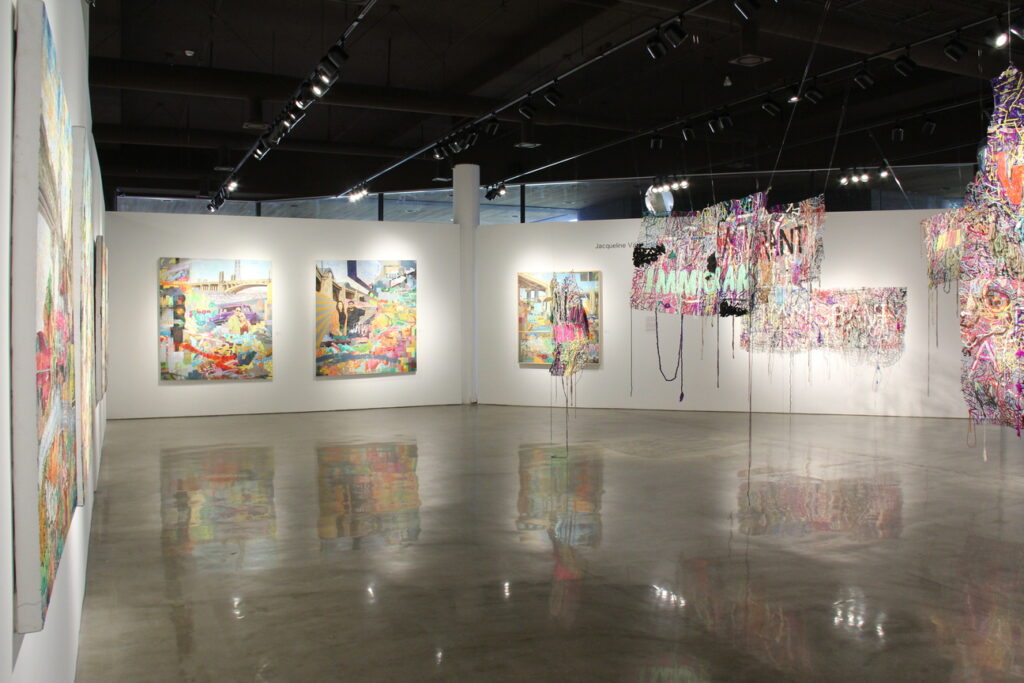
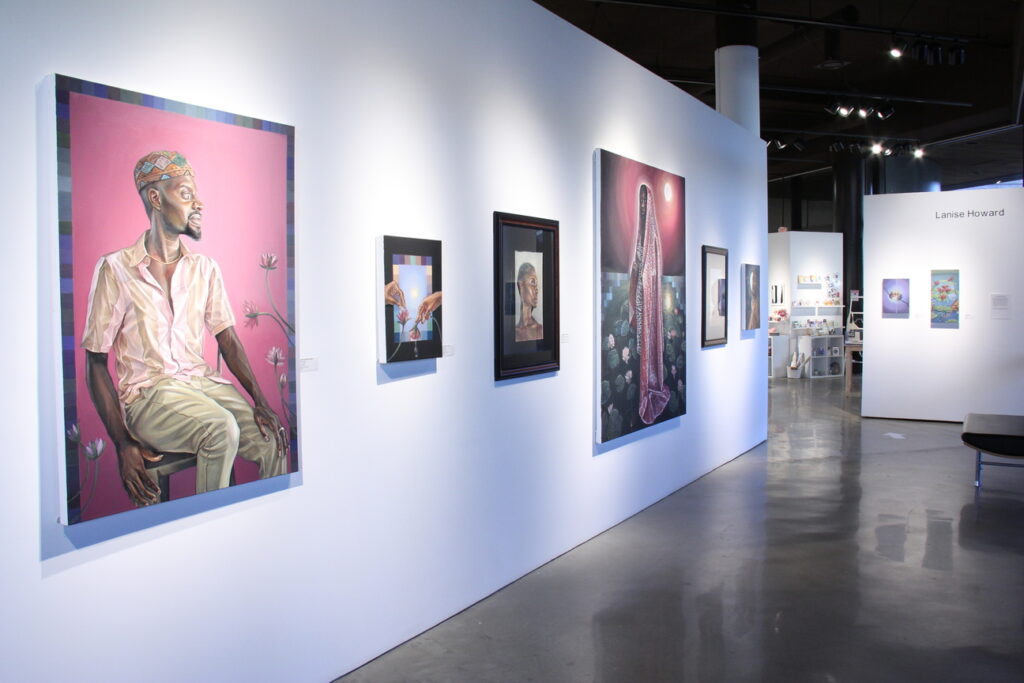
At its core, “Taking Up Space” is an exhibition that gives women artists a platform to discuss the matters that are the most important to them. Every artist in the show contributes to the exhibition’s overall message in a way that is more than relevant to the contemporary art scene. But the real breadth of the exhibition is in its overall impact—the image of women in art has long been passive, secondary, and a subject of male appraisal. “Taking Up Space,” however, turns that idea on its head by showcasing women artists who are unafraid to be seen and heard, to be intimate with themselves and to be brazenly human overall.
“Taking Up Space” at Brea Art Gallery, January 30 to March 26, 2021. 1 Civic Center Circle, Brea. www.breagallery.com.



Sorry, the comment form is closed at this time.